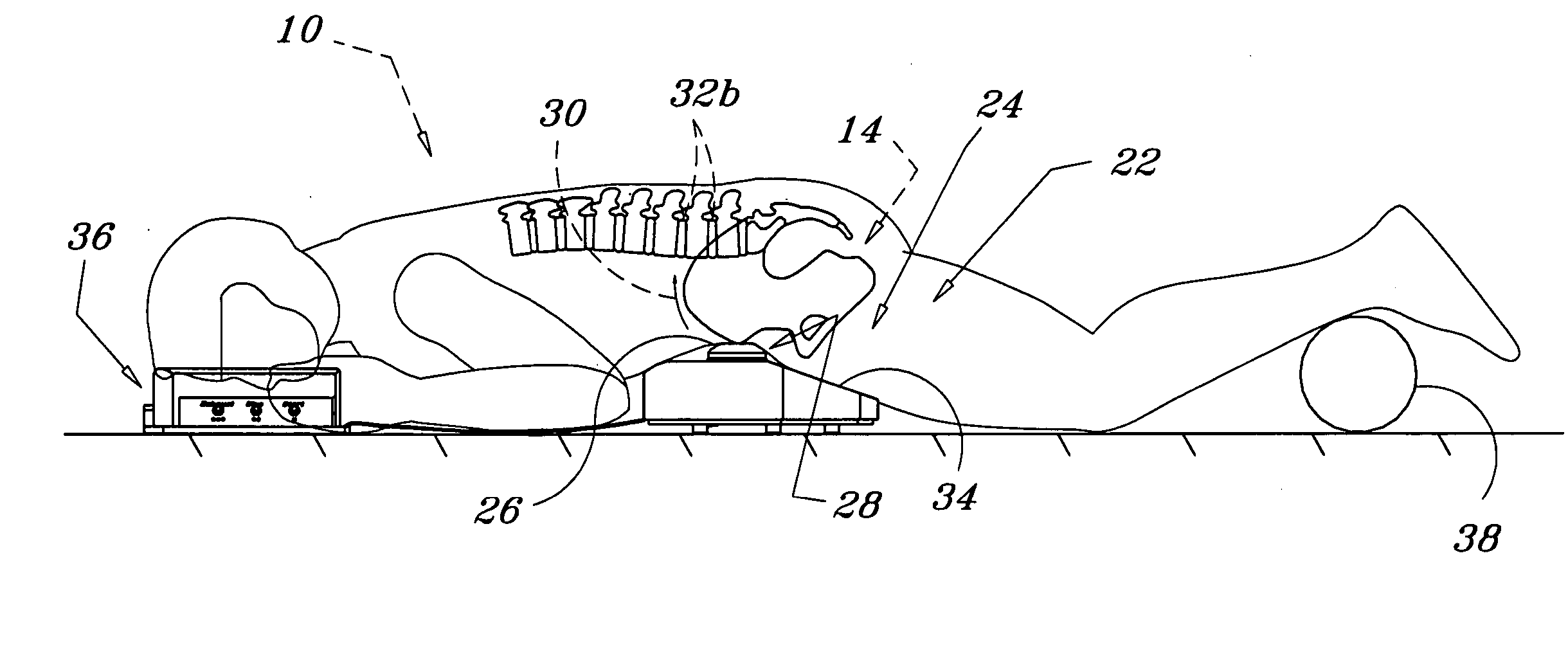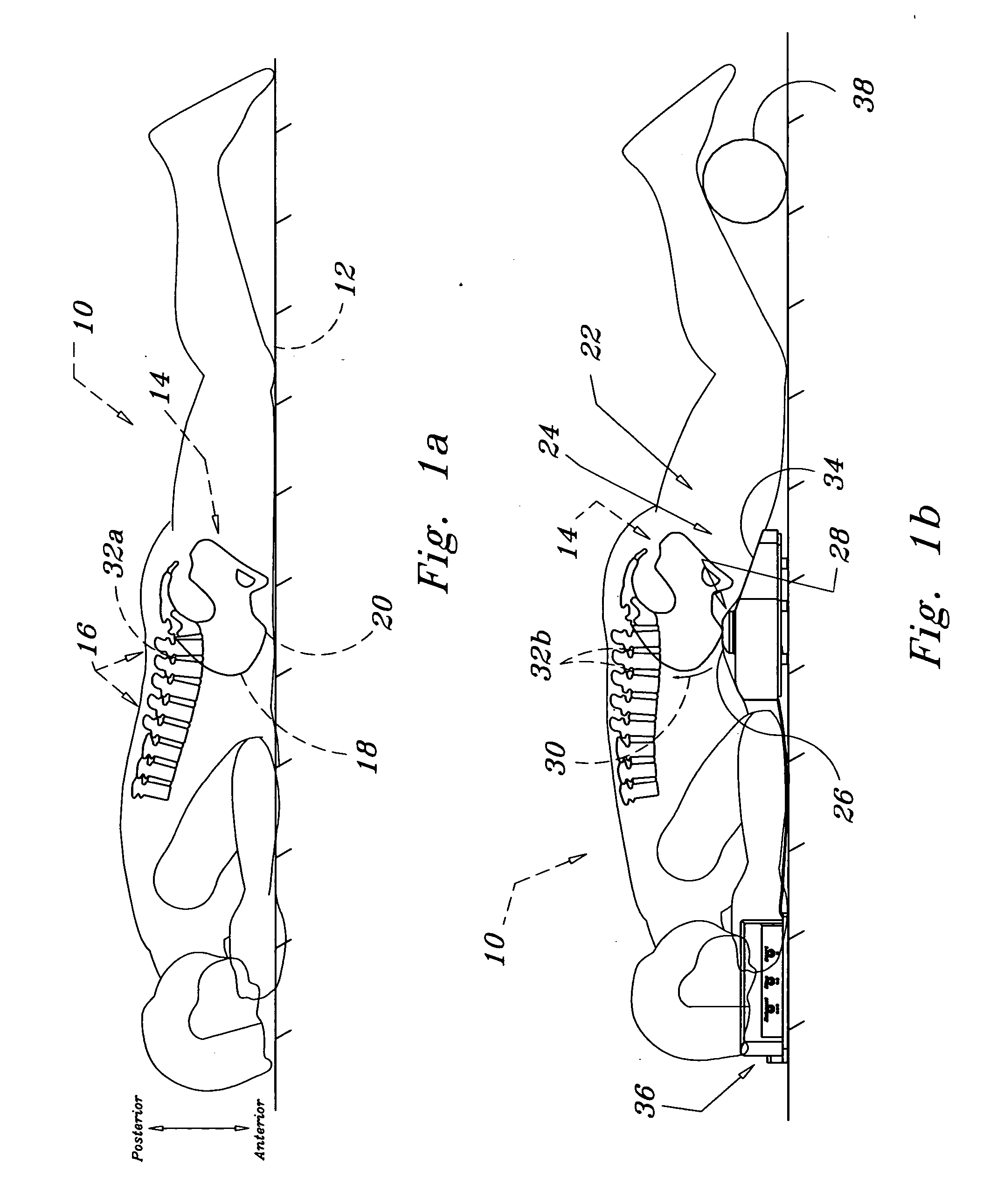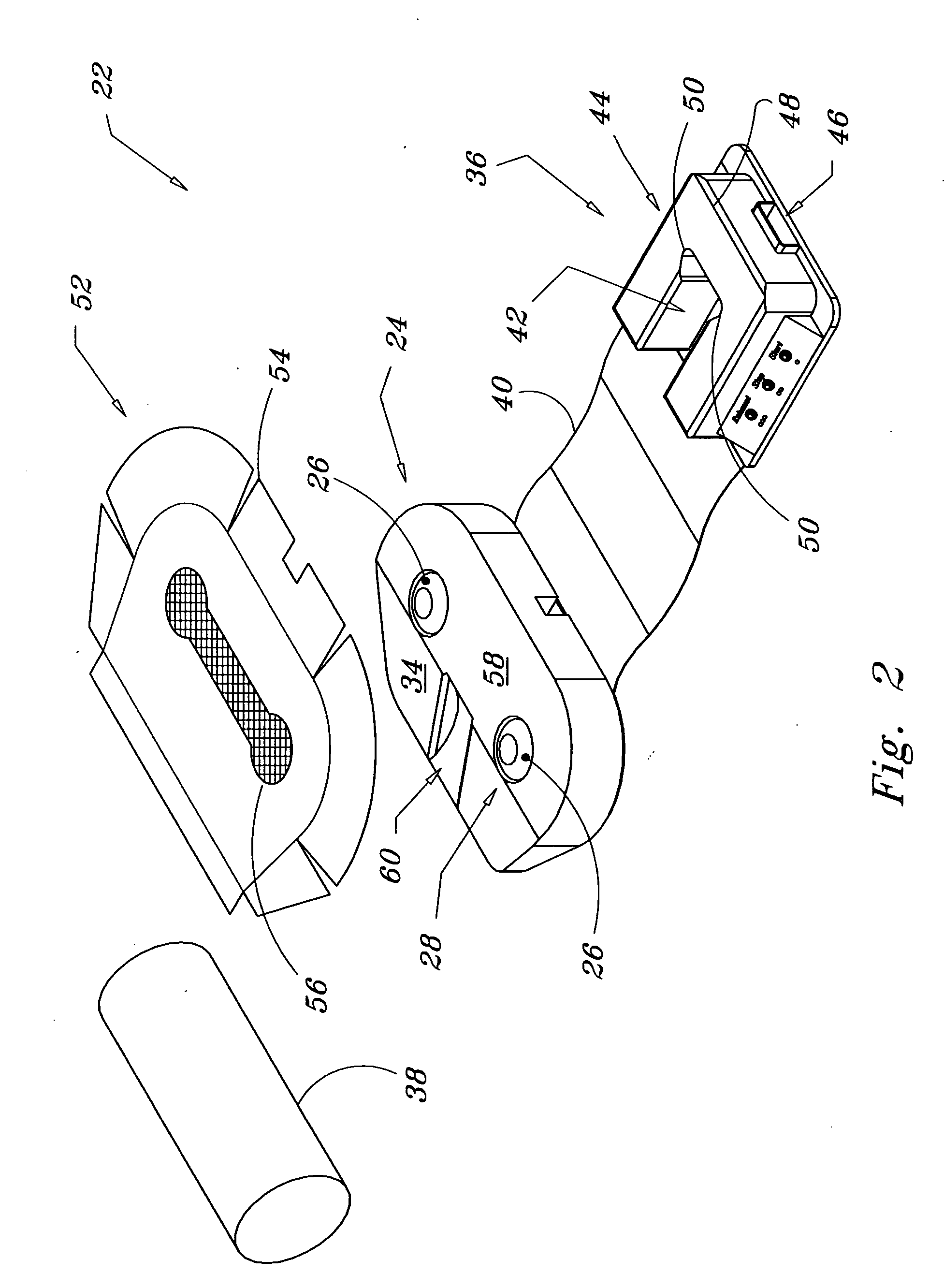Back therapy device
a technology for back pain and therapy devices, applied in physical therapy, chiropractic devices, medical science, etc., can solve the problems of back injuries, work-related disability, staggering loss to the american society, etc., and achieve the effect of increasing comfort and increasing comfor
- Summary
- Abstract
- Description
- Claims
- Application Information
AI Technical Summary
Benefits of technology
Problems solved by technology
Method used
Image
Examples
Embodiment Construction
[0021] The present invention is a back therapy device. The general function of the device is shown in FIGS. 1a and 1b. In FIG. 1a, a person 10 is shown lying in a face down in a prone position on a flat surface 12. The pelvis 14 of the person 10 is illustrated in its natural position with the lumbar spine 16 including its natural curve or lordosis. The front sweeping portion of the pelvis is the illiac crest 18. Toward the anterior (in this view the lower) portion a bony protrusion exists. This protrusion is the anterior, superior illiac spine 20. The pelvis is supported by the long bones of the upper legs or the femur (not shown).
[0022] The same body is shown while using the device 22 in FIG. 1b. The invention may include some peripheral components, as will be disclosed in detail, but the primary component is the pelvis pad 24. This is positioned under the pelvis 14 of the user 10 with an upper portion 26 of a bladder 28 positioned under the illiac crest of the user. Optimally the...
PUM
 Login to View More
Login to View More Abstract
Description
Claims
Application Information
 Login to View More
Login to View More - R&D
- Intellectual Property
- Life Sciences
- Materials
- Tech Scout
- Unparalleled Data Quality
- Higher Quality Content
- 60% Fewer Hallucinations
Browse by: Latest US Patents, China's latest patents, Technical Efficacy Thesaurus, Application Domain, Technology Topic, Popular Technical Reports.
© 2025 PatSnap. All rights reserved.Legal|Privacy policy|Modern Slavery Act Transparency Statement|Sitemap|About US| Contact US: help@patsnap.com



